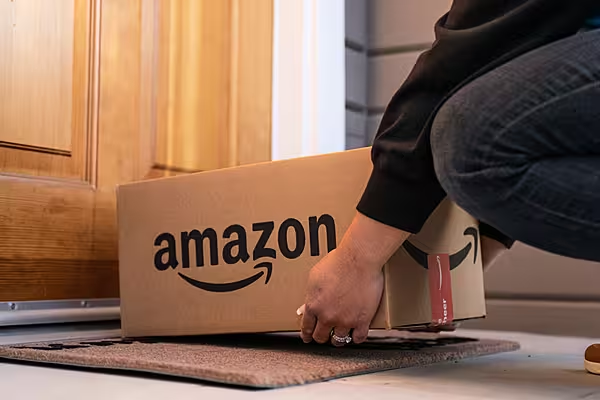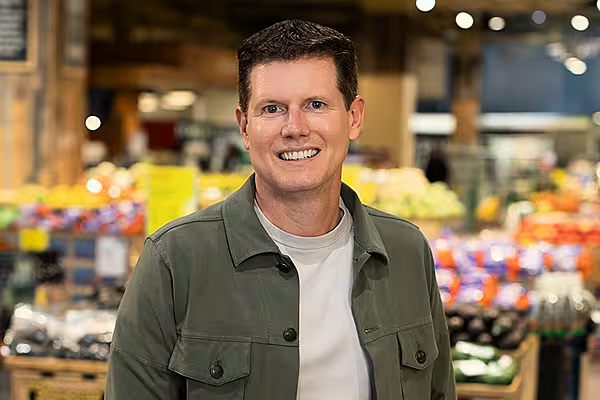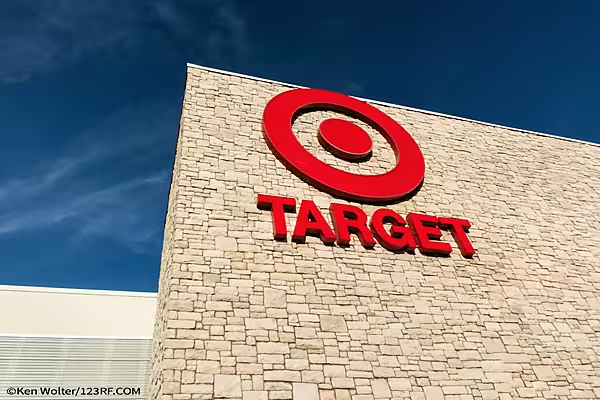Amazon.com Inc. is betting that people shopping for discounted organic Thanksgiving turkeys at Whole Foods this week may decide to pick up an Echo digital assistant as well. The idea is simple: Those gadgets will linger in homes a lot longer than leftovers and probably generate far more money for Amazon than the few bucks it shaved off the price of those birds.
This gifting season, its first since acquiring natural grocery chain Whole Foods Market, Amazon is expanding far beyond its typical year-end strategy of winning wallet share from rivals Wal-Mart Stores Inc., Target Corp. and EBay Inc. The company is using the holiday moment and its broader brick-and-mortar presence to further a lead in the emerging market for voice-activated smart home speakers, hoping to leave tech rivals Google and Apple Inc. in the dust.
Online Surge
Online spending for the holidays in the U.S. is forecast to surge 14 percent to $107.4 billion, a slight acceleration from the 11 percent gain posted last year. While Amazon is projected to capture half of the overall growth, the Seattle-based retail giant is also looking ahead to future holidays by pushing its devices into as many homes as possible, expecting shoppers to begin summoning products to their homes via voice rather than through desktop PCs and smartphones. RBC Capital Markets predicts Amazon will sell $5 billion in goods ordered by voice by 2020.
That explains why Amazon is showcasing its devices at hundreds of physical locations -- Whole Foods, malls and shopping centers, its 13 bookstores and even at select Kohl’s Corp. department stores in Chicago and Los Angeles. And those visiting Amazon.com to do holiday shopping will see Echo devices get top billing in a banner ad that occupies the top of the home page.
Voice Activated
"They are making a huge investment to push all of their Echo devices and the Alexa platform in general," said Suzanne Tager, a retail analyst at Bain & Co. "One of the most important pillars to growing brands has always been visibility and distribution, and they are trying to win the penetration race by getting more devices on the street."
Amazon three years ago introduced its first Echo speaker, letting people stream music and dim their lights via voice command. The gadget became a surprise hit, and Amazon worked with developers to quickly add features and link other devices such as thermostats, garage doors and cars to the voice-activated Alexa platform.
Google and Apple are giving chase with competing AI-enhanced digital assistants, but Amazon remains ahead, controlling 70 percent of the $4 billion smart speaker market, according to Bain. And it’s in a good position to maintain that lead with a lineup of voice-activated devices priced from $50 to $230. The Echo Dot -- the cheapest version -- will be sold for $30 on Black Friday. Google offers two smart speaker options, including the new $50 Google Home Mini that will be $29 at many retailers on Black Friday, while Apple’s HomePod was delayed and now won’t be released in time for this holiday.
"Amazon has really flooded the market with these low-cost devices to get consumers used to interacting with them," said Victoria Petrock, analyst at EMarketer Inc. "Amazon wants to lock up all the different ways to shop. They’ve got online. They’ve got in-store. And now they want voice."
In-Store Displays
Amazon completed its $13.6 billion acquisition of Whole Foods in August, gaining more than 400 grocery locations in the U.S. Ahead of the year-end shopping rush, the company has set up displays in several Whole Foods stores, where Amazon employees are demonstrating the devices and answering questions. The Amazon display was given prominent placement in a Whole Foods in Chicago’s Lakeview neighborhood on a recent weekday, greeting shoppers as they emerged from a parking garage to enter the main store area. Few shoppers actually stopped to enter the kiosk, but most gave it a quick scan while boarding the elevator.
Echo digital assistants are a focal point of the kiosk. A video screen above the display scrolled through messages like “Take One Home Today’’ and “A Perfect Way to Give a Gift.’’
Despite the voice push, most online spending this season will still be on PCs, with mobile devices narrowing the gap, following the pattern of previous years. Cyber Monday will be the biggest spending day, with sales rising 16.5 percent to a record $6.6 billion, according to Adobe Systems Inc. E-commerce spending on Thanksgiving Day will grow 15 percent to $2.8 billion, Adobe predicts, with smartphones making it easy to shop even while visiting with family.
Amazon, Wal-Mart, Target, Best Buy Co. and other retailers are all competing for shoppers with big discounts on electronics and toys, including Microsoft Corp.’s new Xbox One S game console, Sony Corp.’s competing PlayStation 4 Slim, and Roku Inc.’s 4K TV.
Feeling Comfortable
The next step for Amazon is getting customers comfortable with shopping via voice command, which has been a tricky proposition. Many shoppers don’t trust Echo speakers to get their voice orders right, because most of the devices lack screens for visual confirmation. To counter this concern, Amazon is trying to encourage shoppers to use their voices by giving them early access to deals beginning on Wednesday. Such early discounts for voice shoppers is a good enticement, said Lindsay Sakraida, director of content marketing at DealNews.
"One of the biggest complaints about Amazon deals is they are hard to shopbecause they cycle so frequently and run out so quickly," she said. "Making some deals available earlier is a fantastic way to get people to try voice shopping."
Of course, offering cheap turkeys may not turn out to be a gateway to getting people to shop by voice -- in which case Amazon will move on, said Kirthi Kalyanam, director of the Retail Management Institute at Santa Clara University’s Leavey School of Business.
"Putting their devices in Whole Foods is a minimal effort for them and the potential upside is huge," he said. "I’m just not sure it’s going to work. People don’t go to Whole Foods thinking about devices."
News by Bloomberg, edited by ESM. Click subscribe to sign up to ESM: The European Supermarket Magazine














